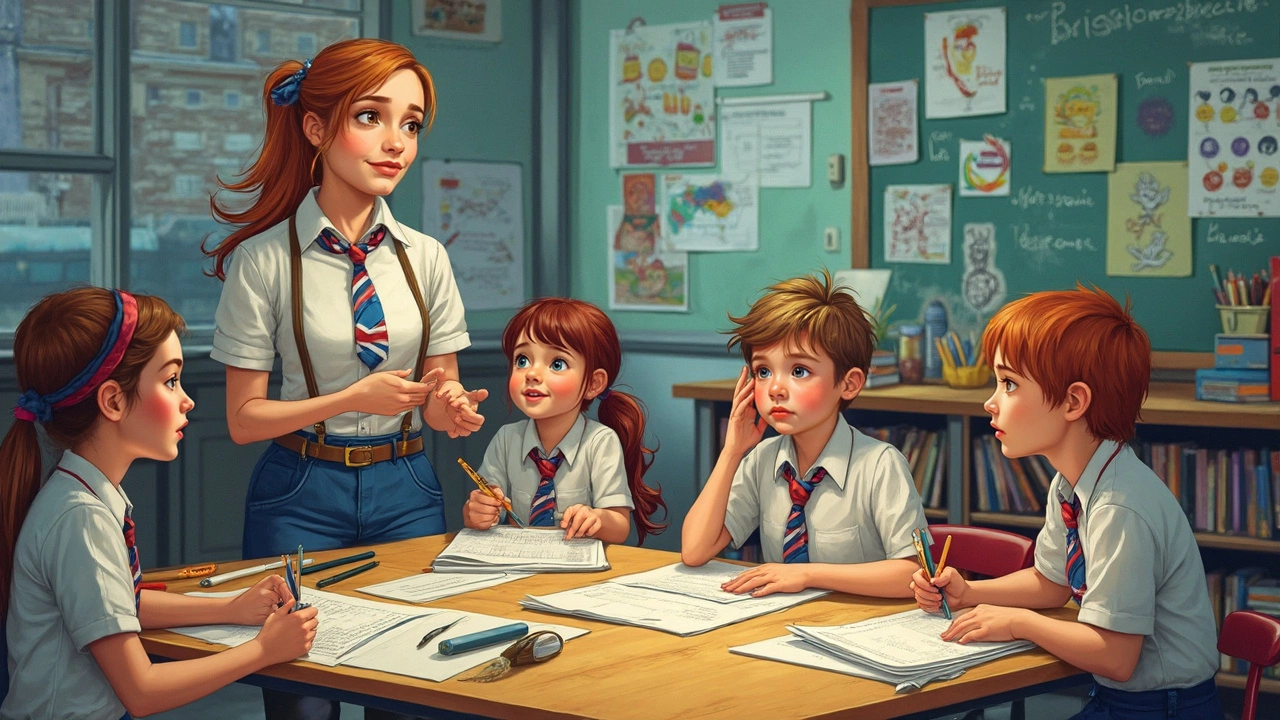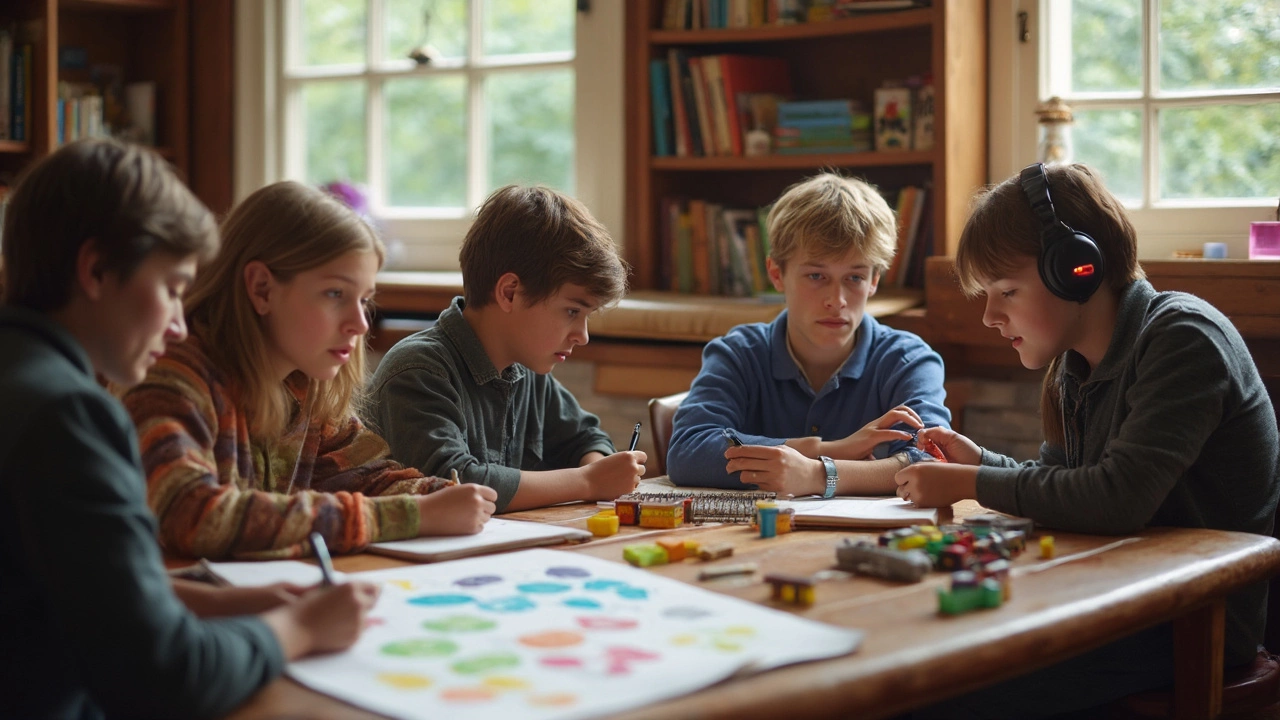Ever wondered why your friend remembers every single word you say, while you need to see a picture or write it down? There’s no one-size-fits-all when it comes to learning. Chip away at the brain, and you’ll see it lights up in all sorts of ways—listening, watching, moving, or scribbling in a notebook. The thing is, figuring out your personal learning style can be a game-changer, whether you’re prepping for exams, teaching your kids to tie their shoes, or just trying to remember all your passwords (seriously, who doesn’t struggle with that?).
What Are the Four Main Types of Learning?
Picture this: a group of people learning to ride a bicycle. One person watches a YouTube tutorial, another listens to a podcast about cycling tips, a third studies the mechanics in a manual, and the fourth just hops on and starts pedaling. All chasing the same goal, but everyone’s brain has its own way of getting there. Scientists and education experts call these the four main types of learning: Visual, Auditory, Reading/Writing, and Kinesthetic.
Let’s break down each type:
- Visual learners soak up information best through images, diagrams, and colors. If you love mind maps, charts, or doodling your notes, this might be you.
- Auditory learners are all about sounds. Think lectures, podcasts, and even reading out loud—these folks need to hear it to get it.
- Reading/Writing learners shine when there are words involved. Give them a stack of books, well-organized notes, or teach them to rewrite information, and you’ll see it stick.
- Kinesthetic learners get hands-on. They need to move, touch, and try things physically. If you’re constantly tapping your pen, acting things out, or inventing your own experiments in the kitchen, this could be your style.
Research from the University of South Florida found that most of us are a blend, not pure types. You might find you lean heavily toward one but still use tricks from the others, depending on what you’re learning.
Here’s the classic VARK model breakdown (that’s Visual, Auditory, Reading/Writing, Kinesthetic):
| Style | What Works Best | Common Examples |
|---|---|---|
| Visual | Charts, diagrams, mind maps | Infographics, videos, color coding |
| Auditory | Listening, speaking, music | Podcasts, lectures, group discussions |
| Reading/Writing | Text-based input/output | Books, notes, essays |
| Kinesthetic | Physical activity, hands-on tasks | Experiments, role-play, building models |
The catch? Teachers usually teach in the style they like best, not always what suits the learner. In 2023, a survey in the UK found that 62% of students felt lessons would stick more if delivered in ways matching their own style. So, if you’re a teacher or a parent, getting to know these learning flavors can make everything way more effective—and way more fun.

How to Identify Your Learning Style (And Why It Matters)
Picking your learning style isn’t like some BuzzFeed “What Sandwich Are You?” quiz. There’s a bit more to it than ticking a box—but it’s not rocket science either. Start by thinking about how you crack problems or remember things. Do you draw, listen, write, or just dive in and do it?
- If you’re always sketching while listening to a presentation, you might tip toward being a visual learner.
- If grabbing facts from audiobooks or talking things through with friends helps it sink in, hello, auditory learning!
- If your head is buried in a book and you can’t help but rewrite your notes over and over, reading/writing is probably your lane.
- If you struggle to sit still and only “get it” after trying it out, you’re likely a kinesthetic rockstar.
No one’s fully boxed in, though. There’s a whole spectrum, and most people are a cocktail. There are even quick self-assessment quizzes and apps designed to help you see your own learning bias, like the official VARK questionnaire—it’s been around since the late '80s and is still used in schools and businesses worldwide. Just google “VARK questionnaire” when you have a minute.
Once you know how your brain works best, you can tweak how you study, teach, or even train for your job. Instead of banging your head against the wall trying to memorize facts the “wrong” way, match your approach to your style:
- Visual learners: Make colorful flashcards, design mind maps, or sketch bite-sized notes with doodles. Apps like Canva and Miro are packed with tools for you.
- Auditory learners: Record lectures and replay them, or study with friends and talk things through. Try reading your notes aloud or using mnemonic songs. Even joining a study group helps.
- Reading/Writing learners: Rewrite key points, summarize chapters, or make to-do lists. Stick with good-old-fashioned reading or explore apps like Notion or Evernote.
- Kinesthetic learners: Build models, use LEGO bricks for math, take walks while repeating facts, or act out scenarios. Even pacing while you’re on the phone counts as movement-based learning.
The big win? A study from the University of Nebraska in 2022 showed students who used techniques suited to their learning style scored 20-30% higher on tests than before. That’s more than just luck or effort—it’s about smart, personalized technique.
So next time you’re stuck in a boring classroom or slogging through a training module, pause and check if you can switch things up to better suit your style. It could mean all the difference between “meh” and “aha!”

Mixing Styles: Why the Best Learning Isn’t Just One Thing
Ever tried watching a cooking show, then scribbling down the recipe, listening to the chef’s tips, and getting your hands busy with flour? That’s blended learning in action, and it’s the secret sauce for pretty much everything in life these days. Strictly sticking to one method can box you in, but mixing and matching styles makes your memory work harder—and smarter.
Still, there’s a common myth that you should focus on just one types of learning and ignore the rest. That’s not really true! Our brains are wonderfully adaptable. For example, doctors-in-training at Trinity College Dublin layer up—reading textbooks in the morning, practicing on dummies in the lab, talking cases through in small groups, and watching surgeries streamed live. Mixing visual, kinesthetic, and auditory techniques strengthens what they learn—kind of like cross-training for your brain.
Here’s something wild: a big data crunch from Cambridge in 2021 found that students who used a variety of learning approaches had better long-term recall than those sticking to just one. It’s even got a fancy name: interleaving. So, if you’re prepping for exams, don’t just read; try drawing diagrams, making songs, or acting it out. If you’re teaching someone else, rotate tasks every 15 minutes. Switching styles keeps the brain alert and avoids fatigue.
| Tip | What It Helps With |
|---|---|
| Change up your study spot every hour | Keeps the mind fresh and triggers new associations |
| Teach what you just learned to someone else | Boosts understanding (explaining is learning, too!) |
| Combine a podcast with drawing notes | Engages different brain areas at the same time |
| Physical movement breaks (jumping jacks, walk) | Supercharges recall and energy |
| Link facts to stories or personal experiences | Makes info way stickier |
Mixing up methods isn’t just for formal learning either. Need to remember someone’s name? Try writing it down, saying it aloud, picturing their face with it, and shaking their hand. That multi-pronged approach fires up pretty much every part of the brain involved in memory. If you’re a parent or a manager, layering up learning styles for your crew—using visuals, chats, hands-on practice, and quizzes—turns training from a chore into something much more likely to stick.
And here’s the cool thing: with technology, mixing styles has never been easier. You can use interactive apps, smart notebooks, voice-to-text features, even good old Post-it notes and colored pens (still my personal favorite). The more creative you get, the better your brain adapts—and you’ll never want to go back to learning just one boring way again.
